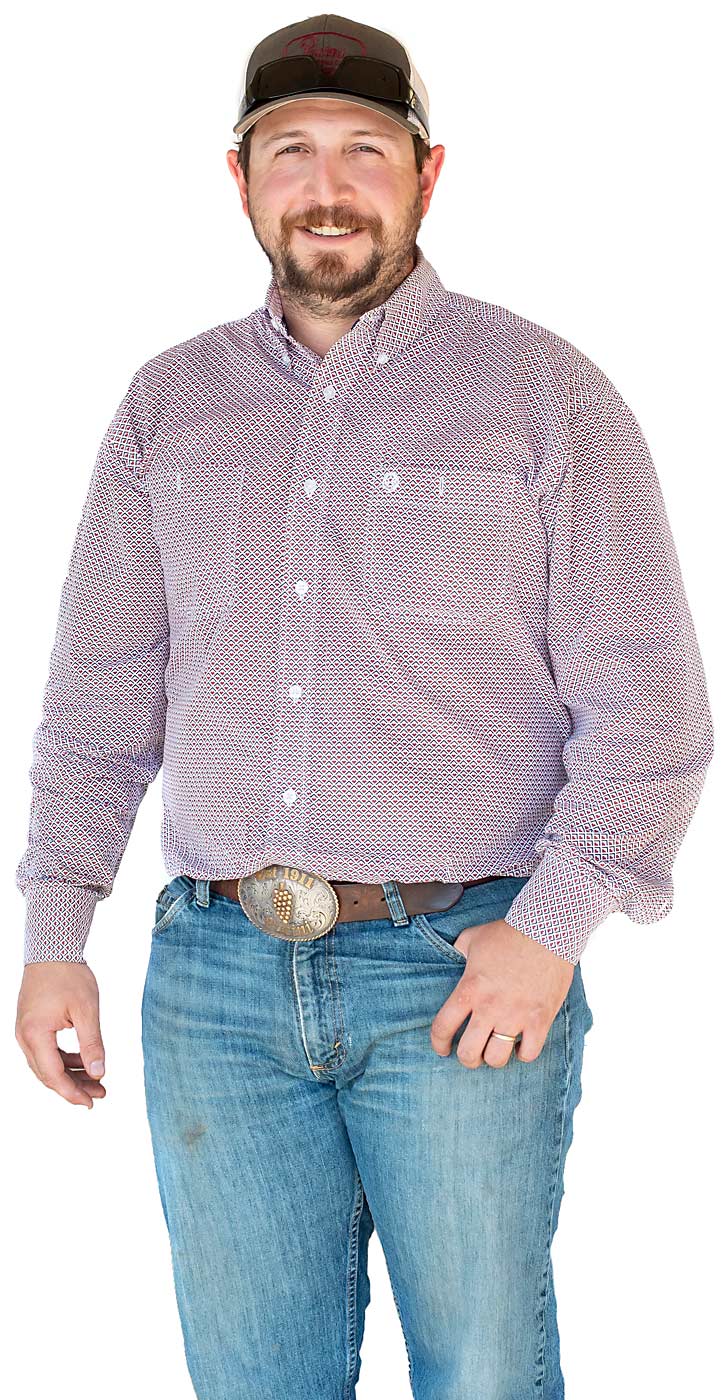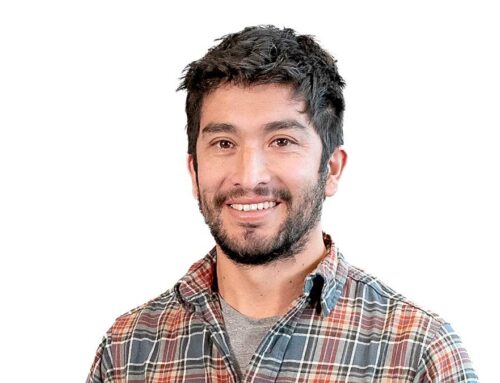family background/ Lorenzo graduated from California Polytechnic State University with a degree in viticulture and grows Zinfandel in the Talmage Bench. He is the son of Lorie and Allen Pacini, and his family has been growing grapes in the Mendocino Valley since 1911.
age/30
grower/Ukiah, California
crops/Grapes
business/Pacini Vineyard
How did you get your start?
When my family immigrated here from Italy, they started out by cutting wood for the leather tanning industry. As they cleared the land of the tanoak trees, they planted vines for their own wines.
Those vineyards are still here today. While working in the vineyard, I learned about hard work and how important it is to learn from the people who’ve been doing it for 50 years.
It’s also valuable to look to the future, learn about technology and find ways to be more sustainable.
What was one of your most important childhood lessons?
One of the things my grandfather taught me was that just because something may be broken doesn’t mean that you throw it away.
Oftentimes if you put in some effort, you can revitalize struggling vines. The idea of bulldozing a vineyard just to put in a new one isn’t always the best decision, and it’s not sustainable. I learned to use my horticultural experience to bring a vineyard back, to avoid pushing it out.
What challenges do you face?
We deal with eutypa dieback in some of our older vineyards, and we try to remove all of the dead wood on the ranch. We cut it out, paint the pruning cuts and get it out as quickly as possible.
You can’t mow the clippings or disk it in — you must remove and burn it. That’s how we’ve been able to sustain and keep our over-110-year-old vineyard healthy.
What’s unique about managing such an old vineyard?
It’s exciting owning a piece of property with vines that old. I’ve learned that I don’t own it — I’m just here to take care of it for the next person.
That vineyard is going to outlive me and my kids, as long as we continue farming it the same way and pay attention to it.
I get the pleasure of working with it during my time on earth. There’s a little pressure on me to continue the family heritage in that vineyard and to be successful with it.
Are you able to bring in new ideas or techniques?
What I’ve brought to the vineyard is actually old technology, with a newfound benefit: sheep. We run about 400 sheep through the vineyard in the winter and they mow all the grass, fertilize the soil and stomp in the additional organic fertilizer.
Their feet are just about as beneficial as their mouths. Their feet tear up the topsoil, so it doesn’t get as compacted. Working with the sheep has helped the soil health immensely.
If I would have talked with the older generations of growers, or my grandfather, they would have never allowed me to bring livestock into the vineyard. However, I think it’s been one of the most beneficial things I’ve done to the vineyard, period.
What’s your perspective about running an old vineyard?
First thing about managing the old vines is that yield numbers basically go out the window. You can’t worry about yields. If there are clusters that aren’t perfect, it’s going on the ground because it’s ultrapremium fruit.
I also don’t run second pickings because it’s always been farmed dry. There’s no irrigation. None. Zero. Some of the modern blocks I work with grow 15-ton to the acre, whereas the old vines grow 1.5-ton to the acre.
Are there opportunities working with old vineyards?
A lot of existing vineyards that some people would consider old and worn-out were planted in the specific locations and styles for important reasons.
About 100 years ago, vineyards were planted in areas that may not be conducive to mechanical harvesting or irrigation systems. They were probably grown on a slope, so they are relatively frost resistant.
Like mine — it hasn’t frozen in over 30 years. There are opportunities because many of these older plantings are more resilient and they need less inputs, inherently making them more sustainable.
What’s your advice to younger growers?
I think some of the things young growers should learn about are soil health, an understanding of topography and what inputs may be required to grow a successful crop on each vineyard. My perspective is to look at what’s been done on a particular block.
These older vineyards may provide an opportunity for a young grower to get a foot in the door. That doesn’t mean you find someplace to remove and replant; what I mean is to renovate the old vines.
Big wineries survive on young productive vineyards, but if a young person can grow high-quality old-vine fruit and market it effectively, you may be able to break through in that category.
—TJ Mullinax







Leave A Comment